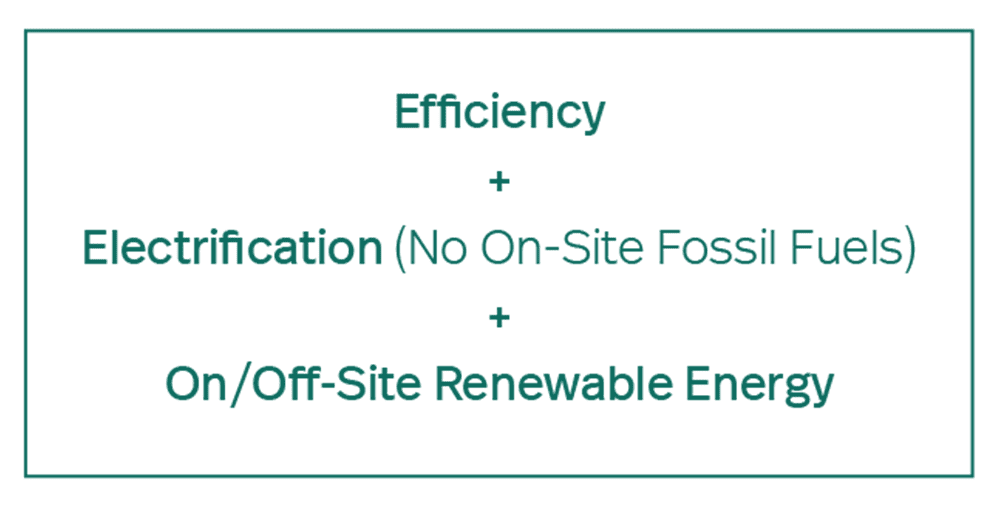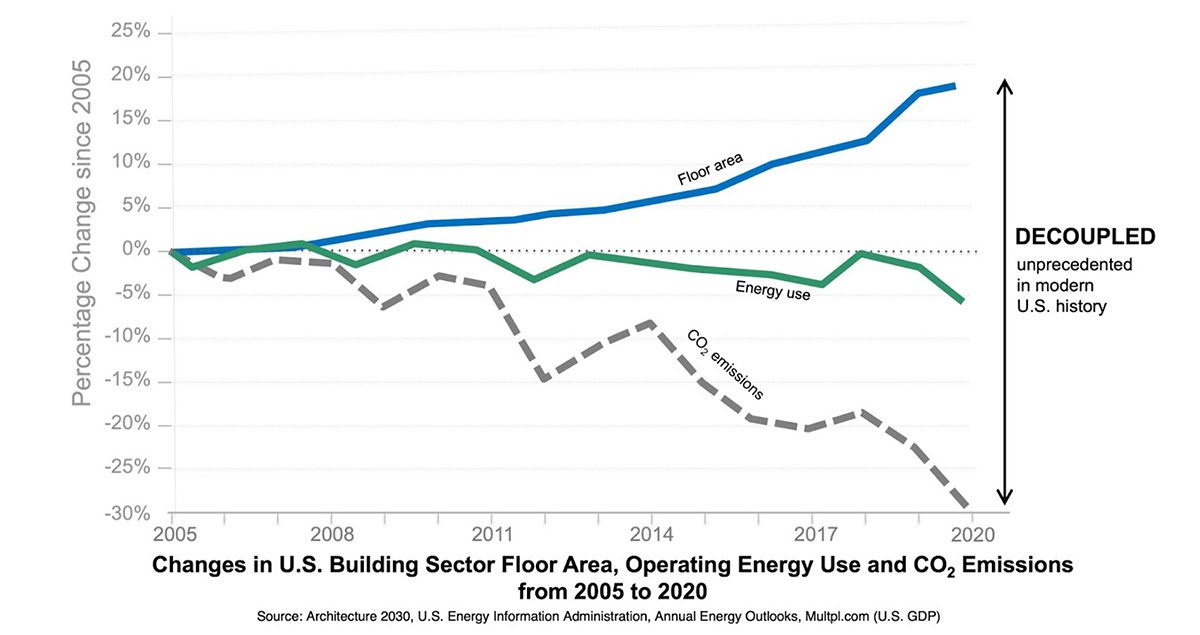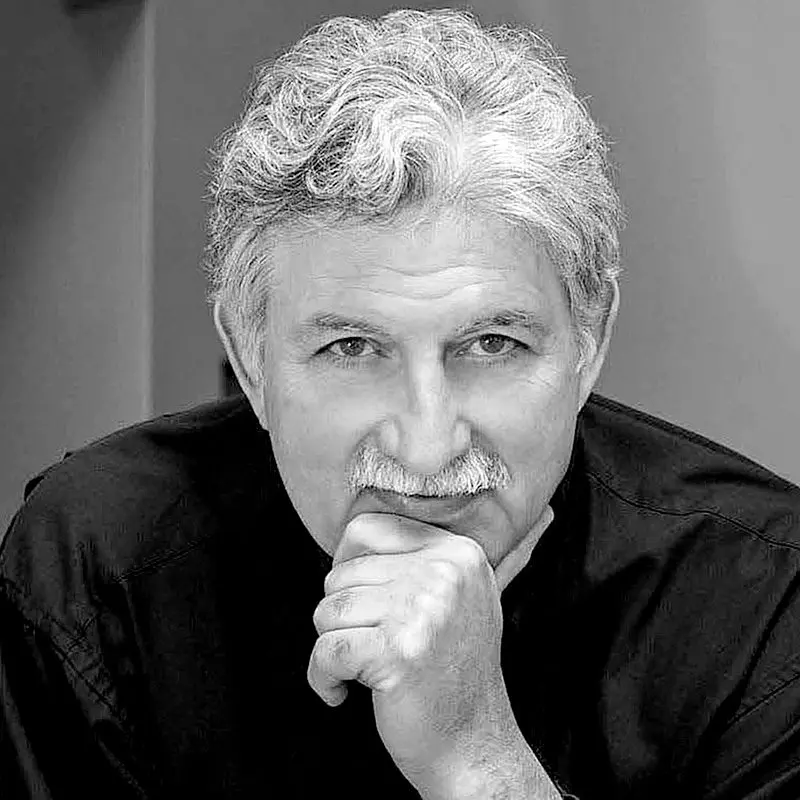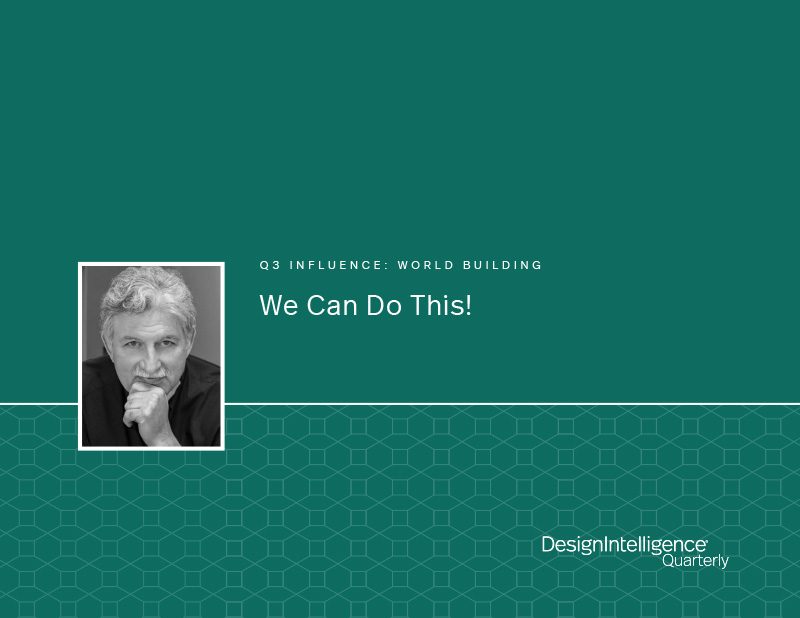We Can Do This!
by Ed Mazria
Architect, Author and Educator
July 20, 2022
The 2021 AIA Gold Medal winner calls for transforming the architectural sector
DesignIntelligence (DI): Let’s talk about world building in the sense of building a movement. You, your organization, and your work are an inspiring example of having built a world from an important mission — likely our most important mission. Starting with a belief and desire to bring about change, through plenty of hard work and many years of dedication, you have parlayed that into an organization (Architecture 2030), recognition by the AIA as last year’s Gold Medalist and by DesignIntelligence as a Lifetime Achievement Award winner, not to mention acclaim from countless other groups. You’ve built momentum. How did you do it?
Ed Mazria (EM): Like many beginnings, it was not intentional. One discovery led to another and an understanding that our sector, those of us responsible for the built environment — architects, planners, design and building professionals and policymakers — had an obligation and opportunity to address our pressing and the most important global crisis: climate change. I realized that to effectively address a crisis of this magnitude, it would be critical to work closely with sector leaders, firms and organizations, and foster collaborations to motivate industrywide action.

From Architecture 2030’s inception, we developed strategies and tools for decarbonizing the built environment, disseminated information through collaborative organizations, social media, bulletins and articles in industry journals and magazines, and educated and inspired our colleagues through keynotes and presentations at national and international conferences and meetings. These messages have been amplified by our collaborators, and collectively we’ve motivated and empowered the global building sector to drive climate solutions.
DI: Fittingly, your mission is focused on changing behavior among designers, builders and users to make necessary corrections for environmental decision-making and behavior. Your recent essay, The Renewables Gambit: Putin Loses, the West Unites, and the Gambit Pays Off, ¹ published in Architectural Record and Common Edge cited some amazing metrics:
- Worldwide solar electricity generation has doubled between 2016 and 2019.
- Wind electricity generation has doubled between 2016 and 2021.
- Similar growth has been witnessed in the United States alone.
Our lack of understanding of exponential growth hits home. How can we get this idea to sink into the minds of government officials, business leaders, and, of course, designers, all of whom are making decisions daily under the wrong (linear) paradigm?

EM: With the environmental impacts associated with climate change increasing daily and the catastrophic security and humanitarian costs of fossil fuel dependency witnessed during the Ukraine war, I now believe the world has reached a point where the continued exponential growth of renewable energy is inescapable. The recent dramatic increase in the demand for solar and wind power is leading to lower prices, which in turn is driving technological advances, increases in efficiency, and new applications such as solar glass, ultracapacitors and floating solar and wind farms, to name just a few. By advocating for building reuse and low- to zero-carbon buildings, infrastructure and materials, our industry can accelerate emissions reductions and the demand for renewable energy.
DI: In the article, you suggest adoption and enactment of existing and new policies in support of renewable energy and reduction of embodied carbon.
EM: Yes, to support the growth of renewables, we’ve developed and promoted adopting zero-carbon building codes, standards and policies to ensure that all new buildings are designed all-electric and generate or procure enough renewable energy to meet building demand.
To transform our existing building stock to zero-carbon, government policies and incentives work best by tying them to when construction normally takes place — at point-of-sale, building upgrades, system and equipment replacement, zoning or use changes, and life-safety and resiliency upgrades. In this way, disruption associated with building renovation work is mitigated and opportunities for financing to overcome any cost barriers are increased.

To reduce embodied carbon in the built environment, we advocate for three strategies — reuse, reduce and sequester. This translates into design and planning strategies, policies and incentives to reuse and renovate existing buildings and developments; accelerate urban infill and densification; design for material efficiency, deconstruction and the reuse of building materials; use local, recycled and low-carbon or carbon-sequestering materials; and design carbon-sequestering sites and landscapes.
DI: What are the obstacles and where is the leverage? Will widespread adoption of these better technologies come from government mandates or from capitalism, entrepreneurs and the private sector? Or are there other options and scenarios?
EM: I sometimes get the question, “But what if my client doesn’t want to spend the money for additional costs, solar energy systems or designing beyond code?” My answer is: We know there are no “additional costs” to designing responsibly. Architects have almost total design flexibility as long as a client’s programmatic requirements are met and a project is brought in on-budget.
From project inception to construction, architects and designers influence and make hundreds of decisions — building reuse, building siting and landscapes, building shape, color, orientation, location and size of fenestrations, shading, spatial configurations, circulation patterns, structural and enclosure materials, and finishes and systems, to name just a few — and each has environmental and cost implications. We control and are continually trading off design and cost options. In new building design, we can reduce operating energy by 50% to 85% compared to the average consumption of similar existing buildings, just through low/no-cost design strategies.
Clients, developers and building owners want well-designed projects that meet their program requirements within their construction budget. In my 50 years of architectural practice, I’ve never heard a client say they wanted an inefficient building that costs more to operate and damages the environment.
DI: So much discussion describes our problems as structural and systematic. They are built into the tenets of government and capitalism to incentivize incorrect behavior. Do you agree? If yes, who is working at that level to change those systems and values? The grow-or-die, win/lose, consumptive mentalities?
EM: No, I don’t agree. That is what the fossil fuel industry would like us to believe. The thinking that growth, energy consumption and emissions in the built environment all increase in concert was recently put to rest.
Since the Industrial Revolution, as the U.S. building stock grew each year, energy consumption and CO2 emissions also increased. However, in 2005, all that changed. Since 2005, we have added over 50 billion square feet to our building stock, but energy consumption in the entire building sector has remained relatively flat and emissions have gone down significantly; in 2020, building sector energy consumption was down 5.1% and CO2 emissions down 30% from 2005 levels. And U.S. consumers have saved billions of dollars in projected energy costs since 2005.
Why? Architects and building sector professionals were alerted to their responsibility for greenhouse gas emissions in late 2003, and in 2005 the “2030 Challenge” was issued and immediately adopted by the AIA and other professional and building sector organizations. With 74% of all the electricity produced in the U.S. going just to operate buildings, by advancing energy efficiency, energy consumption in the sector is not going up and each renewable energy system added to a project, or to the grid, reduces U.S. CO2 emissions. The formula for advancing building operations’ decarbonization is straightforward:

With building operations emissions going down, we are expanding our efforts and changing the conversation to similarly reduce the embodied carbon emissions of buildings, infrastructure and construction through new design strategies, technologies and incorporating zero-carbon to carbon-sequestering materials.
DI: Let’s go back to world building. Few design practitioners will devote their entire careers to this cause as you have over the last half of yours. But I’m guessing your goal is to get them to embrace the evidence you’re sharing and use it some way to transform their practices and, in turn, improve our impacts on the planet. What advice would you give firms about how to go about trying to rebuild their worlds — their cultures, practices, even their supply networks? Not just to differentiate themselves so they can survive and prosper, but to truly become more influential, respected — choose the word — to add more value to constituents and communities?

EM: These are extraordinary times.
We must now look to the immediate future where we, as practitioners, act boldly to confront and prioritize design, planning and construction practices that use no on/off-site fossil fuels, reuse and repurpose existing buildings and infrastructure, and incorporate low-carbon to carbon-sequestering materials and sitework. It portends an industry that dramatically expands its scope, advocates for change, and embraces its unique role in the world.
Accelerating the transformation of our sector may very well determine the sustainability of the planet.
Edward Mazria, FAIA is an internationally recognized architect, author, educator and visionary with a long and distinguished career. Winner of the American Institute of Architects 2021 Gold Medal award, his award-winning architecture and planning projects span over a 35-year period. Each employs a cutting-edge environmental approach to design. He is the author of numerous published works, including the “Bible” of solar design, “The Passive Solar Energy Book,” currently in use worldwide.
Most recently, Mr. Mazria has reshaped the national and international dialogue on climate change to incorporate building design and the building sector. He is the founder of Architecture 2030, an innovative and flexible research organization focused on protecting our global environment. He developed and issued the 2030 Challenge, a measured and achievable strategy to dramatically reduce global greenhouse gas emissions and fossil fuel consumption by the year 2030. He speaks nationally and internationally on architecture, design, energy and climate change and has taught architecture at several universities, including the University of New Mexico, University of Oregon and UCLA. His numerous awards include AIA Design Awards, the AIA Design Innovation Award, the American Planning Association Award, Department of Energy Awards, the “Pioneer Award” from the American Solar Energy Society, the first recipient of the Equinox Award presented on the 50th anniversary of construction of the world’s first commercial solar building, and, most recently, a 2008 National Conservation Achievement Award from the National Wildlife Federation. He is a senior fellow of the Design Futures Council and the most recent winner of its Lifetime Achievement Award.


